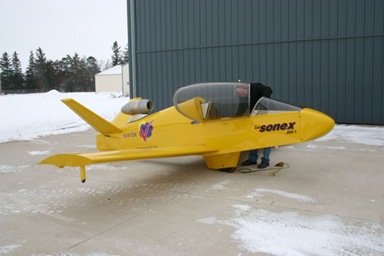Check this out. I bet you wish you could do this in your Extra!
Understanding weather fronts video
Pilots need to have a good grasp and understanding of basic weather conditions that they may encounter in the air. Hence, Jason Schappert, the blogger behind the MzeroA.com blog, has begun a new “understanding weather” video series where he will be going over various weather conditions and how they impact pilots. Jason’s first video covers weather fronts and he begins by explaining what an air mass is and what a front is and then he explains the four most common types of fronts. The video is less than five minutes long and well worth watching as a reminder of what pilots face while flying.
VFR departure briefing simulator video
John Fiscus, the Chief Pilot of The Flight Academy, has recently posted a video on to the Cirrus Owners & Pilots Association (COPA) website where he demonstrates a VFR departure briefing and then a departure which utilizes some of that briefing. In his post, John made an interesting point that:
Many people I train with aren’t as ready as they ought to be for anything beyond the norm to happen in those first few seconds of flight. Performing a VFR departure briefing is a good way to prepare for the unexpected… and ensure the appropriate (and timely) reaction!
He also noted that:
A VFR departure briefing is going to be difficult for most established pilots to start performing. I have heard the excuses, but they really boil down to, "I have been flying this long and it works fine. I know what to do if something happens, I can handle this."
However, John then mentioned that when he see pilots doing simulator training, many aren’t all that prepared to make a tough call fast. Furthermore, he noted that many experienced Cirrus pilots don’t pull the CAPS handle soon enough – especially when a low altitude engine failure is simulated and time is short.
The video is less than six minutes long and hence is worth watching.
A personal jet that will fit inside your garage
While flying cars or jetpacks may not exactly be on the market, the personal jet may soon be. According to the Wired.com Autopia blog, the SubSonex is designed to be a modestly priced (that is, if you consider US$60,000 to be modestly priced) private jet that will also conveniently fit inside your garage.
However, the company has only performed ground testing and hence, it doesn’t have any real performance figures just yet but the jet is expected to cruise at more than 240 mph and climb at over 2,000 feet per minute. In other words, as close as most of us will ever get to flying a real fighter jet.
According the aircraft’s manufacturer, they are hoping to debut the jet at the AirVenture Aviation Show next July (and perhaps have it ready for Christmas….)

Engine failure and incipient spin video
We have recently posted a couple of posts concerning what to do or not to do should you experience an engine failure right after take-off. However, Blake, the blogger behind the Fly With Blake blog, has just posted a video showing a textbook example of what can and will likely go wrong if you attempt to return to the airport at to low of an altitude after an engine failure immediately after take-off.
Unfortunately, the pilot and his acrobatic partner were both killed in the crash and we should warn you, the video is graphic.
Engine failure on takeoff and the impossible turn
Jason Schappert has posted the second video in his series about engine failures after takeoff. In part one, he had explained what to do if an engine quits at a low altitude while in part two, he moves on to what happens when there is no usable runway left and then he covers the topic of so-called “impossible turns.”
Regarding impossible turns, Jason says that if you are flying below 1,000 feet, you should not even think about trying to turn back but if you are flying at 1,000 feet or above, then you can consider it. He also makes the interesting point that while you my not make the runway, you will at least be on airport property (that is, in the example he used).
Moreover and as we mentioned in a recent post (How impossible is the impossible turn?), there are situations where the impossible turn can be performed but it can really depend on the circumstances and the pilot’s training. After all and as Bruce Mamont commented in the post’s comment’s section:
Learning how to execute, the right altitude and practice are critical. It shouldn’t be attempted on the strength of reading an article, blog, or listening to hanger talk; I’d hope that all of the above might inspire a desire to seek out competent instruction.
A point definitely worth noting!